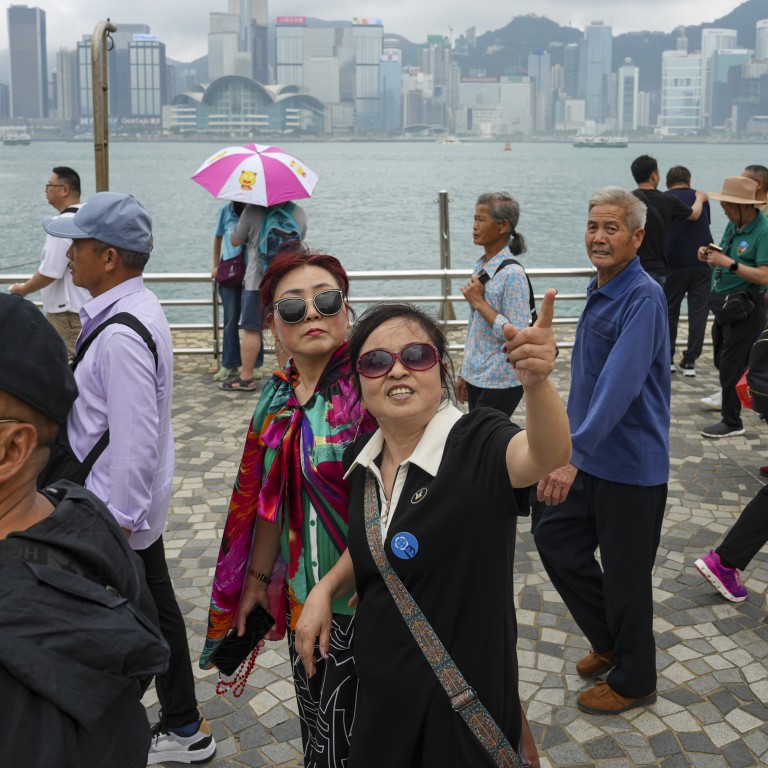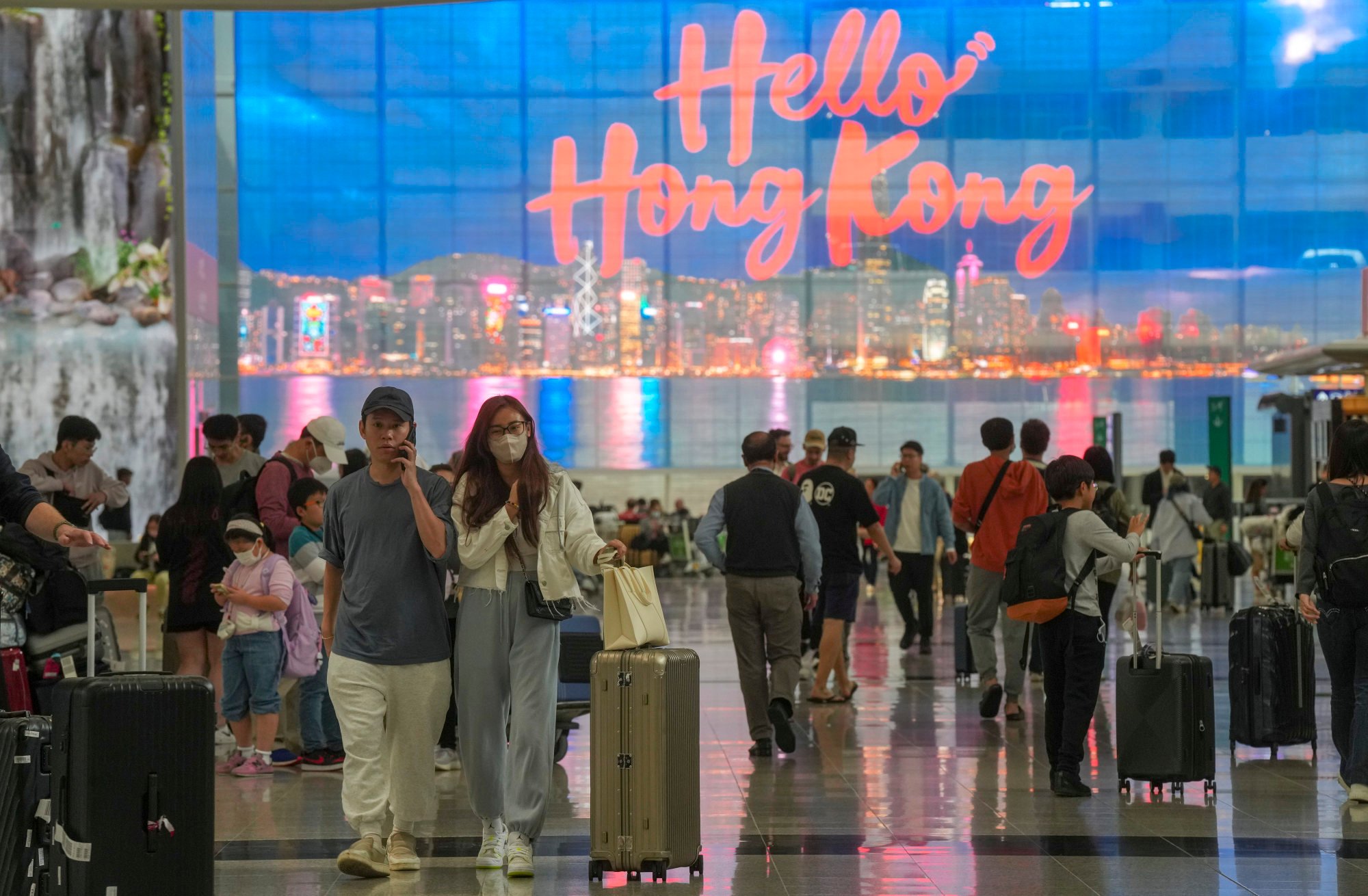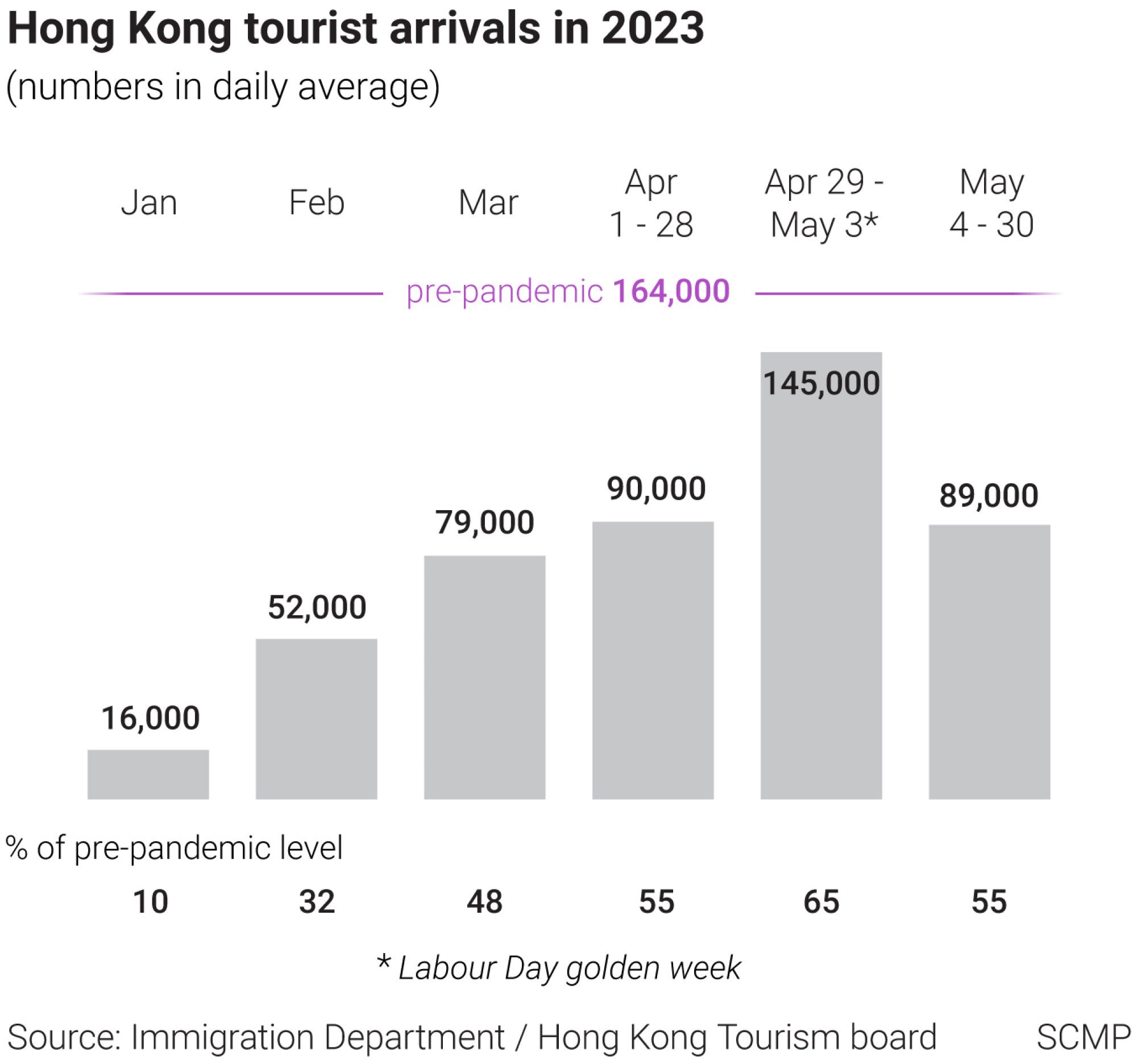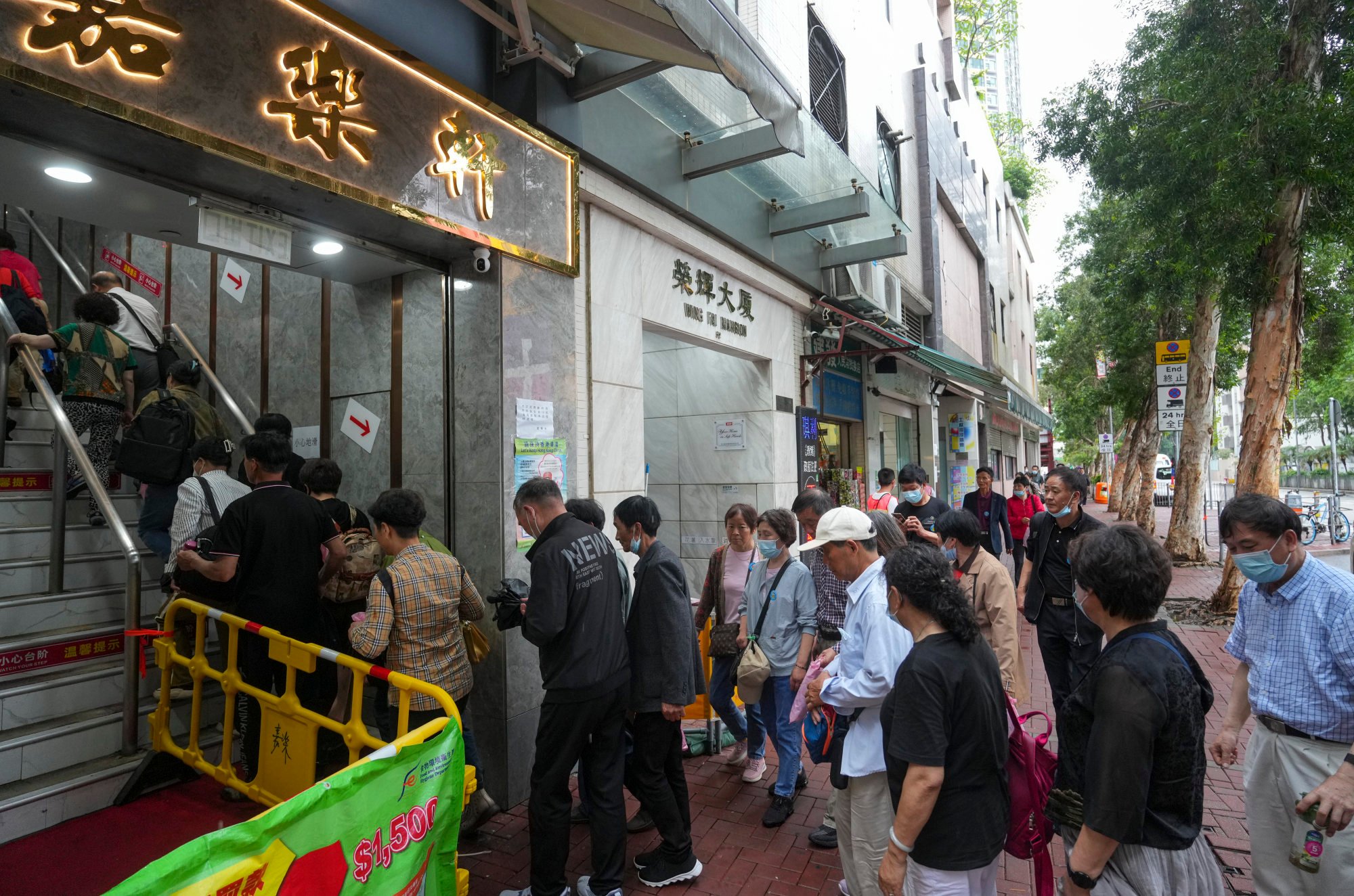
10 million visitors came to Hong Kong in first 5 months of year, but top tourism official warns labour shortages, lack of flights could affect recovery
- Tourist numbers return to 40 per cent of pre-pandemic levels, with increase led by mainland Chinese and Southeast Asian visitors
- Dane Cheng, executive director of Tourism Board, expresses concern over flight capacity
Dane Cheng Ting-yat, executive director of the Tourism Board, on Friday said the increase in visitors was led by mainland Chinese and Southeast Asian tourists, with their numbers returning to more than 60 per cent of pre-pandemic levels.
United States visitors were back to 45 per cent of the pre-Covid level and European Union 36 per cent, mainly driven by business or essential travel.
Over half of the total number of visitors in February spent an average of 4.3 nights in the city, while those who came between March and April stayed for 3.6 nights, exceeding the pre-pandemic figure of 3.2 nights.

Fewer mainlanders arrived in the city via air or land.

Increased demand and tight capacity have led to higher airfares and hotel charges.
“Higher prices will ease gradually as the authorities are bringing in more labour,” Cheng said.
Thirty per cent of hotel rooms in Hong Kong were still occupied by local residents as long-term stay contracts had yet to expire, compared with 12 per cent before the pandemic.
Cheng estimated only 70 per cent of the city’s hotel rooms were available in April. He said tourist beds could cost an average of HK$1,500 per room a night, compared with HK$1,300 before the pandemic.
100,000 people jostle for free Cathay Pacific tickets from US, Canada to Hong Kong
Hotel occupancy rates reached 86 per cent in April, or the same as pre-pandemic levels.
“I’m confident about Hong Kong’s tourism recovery meeting or even beating our full-year target of having 26 million visitors return to the city in 2023,” he said, adding that progress would be gradual.
The target is less than half of the 56 million tourists who visited the city in 2019, 14.2 per cent down from 2018.

More visitors came for leisure purposes. Those who came on holiday represented 47 per cent between March and April, up from 40 per cent in February. But the ratio was still lower than the 61 per cent before the pandemic.
The pre-pandemic level refers to 164,000 visitors or the daily average of tourists arriving in the city between 2017 and 2019.
Cheng cited statistics indicating visitor numbers returned to 32 per cent of pre-pandemic levels in February, 48 per cent in March and 55 per cent between April 1 and 28.

The rate stood at 65 per cent during the mainland’s Labour Day golden week holiday between April 29 and May 3.
Between May 4 and 30, the number of tourists accounted for 55 cent of pre-pandemic levels.
During the March-April period, most mainland visitors were young people aged 26 to 45 and came to the city via the Guangzhou-Shenzhen-Hong Kong express rail.
They preferred taking selfies at hotspots, such as the police station in Yau Ma Tei, MacDonnell Road in Mid-Levels, experiencing nature in Cheung Chau and on Lantau Island, visiting small shops and hanging out in local neighbourhoods like Apliu Street.
They also named Star Ferry rides and tasting Mobile Softee ice creams as must-dos.
Hong Kong’s favourite rubber duck is returning but it’s grown and it’s got a friend
Hong Kong Tourism Industry Employees General Union chairwoman Sarah Leung Fong-yuen said the sector still had a shortfall of thousands of workers.
She said she worried about the supply of hotel rooms over the summer holidays, during which many mainland students were expected to visit Hong Kong for educational purposes.
“If we don’t have enough hotel rooms to cope with the peak season, I fear visitors will have to pay more for hotel accommodation, but their experiences may not necessarily be better.”
Hong Kong’s Cathay must fix image but ‘don’t forget staff and bosses’ role’
Asked if the government’s policy of importing labour could solve the problem, she said tour agents and guides, who were in short supply, were difficult to replace with foreign workers because they needed to be multilingual, local knowledge and an understanding of the history of attractions.
Freddy Yip Hing-ning, president of the Hong Kong Travel Agent Owners Association, said he was pessimistic about the recovery in the second half of this year due mainly to the constraint of flight capacity.
“Convenient transport will bring in visitors, but many international carriers have not returned to Hong Kong yet while Cathay will take more time to return to full capacity,” he said.

